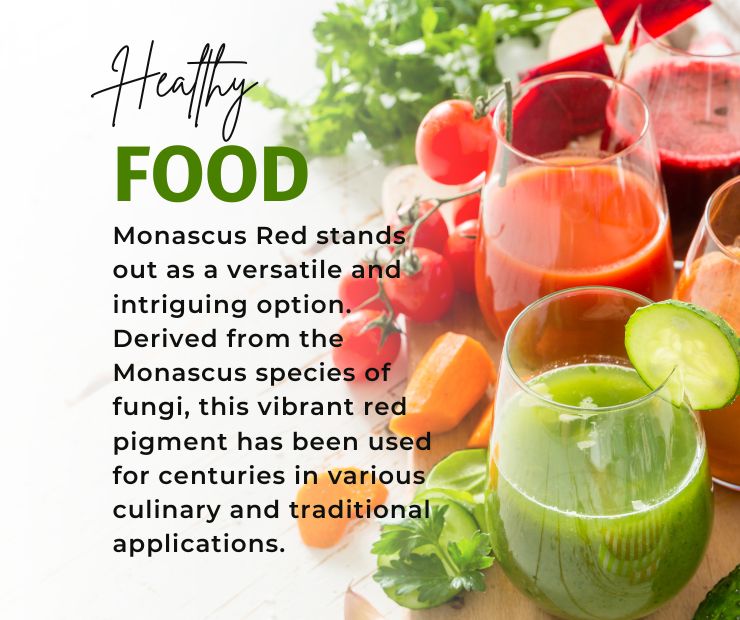Unlocking the Hidden Power of Monascus Red: A Comprehensive Guide to Its Uses, Benefits, and More
In the world of natural food colorants, Monascus Red stands out as a versatile and intriguing option. Derived from the Monascus species of fungi, this vibrant red pigment has been used for centuries in various culinary and traditional applications. But there’s much more to red fermented rice than meets the eye. In this SEO blog, we’ll delve deep into the fascinating world of Monascus Red, exploring its origins, uses, benefits, and even its potential health implications. So, let’s embark on a journey to uncover the hidden power of Monascus Red!
The Origins of Monascus Red:
Monascus Red traces its roots back to ancient China, where it was first utilized as a natural food coloring agent. The Monascus species of fungi were cultivated on rice and other grains, producing a beautiful red hue that found its way into a variety of dishes, including pickled tofu and rice wine. Today, red fermented rice is still widely produced in China and is gaining popularity worldwide as a natural alternative to synthetic food dyes.
Culinary Uses of Monascus Red:
Monascus Red has a rich history in Chinese cuisine and is a critical ingredient in many traditional dishes. Its vibrant red color is prized for enhancing the visual appeal of foods, making it a popular choice for coloring sauces, marinades, and a variety of other dishes. Moreover, it is commonly used to produce red yeast rice, a popular dietary supplement known for its potential cholesterol-lowering properties.
Health Benefits and Concerns:
Monascus Red isn’t just a pretty face; it also boasts potential health benefits. Some studies suggest that it may help lower LDL cholesterol levels and promote cardiovascular health when consumed in moderation as part of red yeast rice supplements. However, it’s important to note that the safety and efficacy of such supplements can vary, so it’s advisable to consult with a healthcare professional before using them.
Monascus Red in the Modern World:
In today’s health-conscious and eco-friendly society, the demand for natural food colorants like red fermented rice is on the rise. As consumers become more aware of the potential health risks associated with synthetic food dyes, there is a growing preference for natural alternatives. red fermented rice fits the bill perfectly, offering a safe and sustainable option for enhancing the color and appeal of various food products.
The Future of Monascus Red:
As Monascus Red continues to gain recognition and acceptance in the global food industry, it holds promise not only as a food colorant but also as a potential source of valuable bioactive compounds. Researchers are exploring its applications in pharmaceuticals, cosmetics, and more. With ongoing studies, we can anticipate further discoveries regarding its health benefits and versatile applications.
Conclusion:
Monascus Red, with its vibrant color and intriguing history, has firmly established itself as a valuable ingredient in traditional and modern cuisines. Its potential health benefits, coupled with its natural origin, make it a promising choice for those seeking alternatives to synthetic food colorants. As we move forward into a more health-conscious and environmentally aware future, red fermented rice is likely to play a significant role in shaping the foods and products we consume. So, embrace the hidden power of Monascus Red and explore its world of possibilities in your culinary creations and beyond!

Comments
Post a Comment